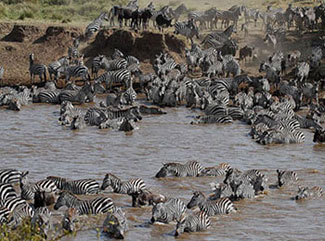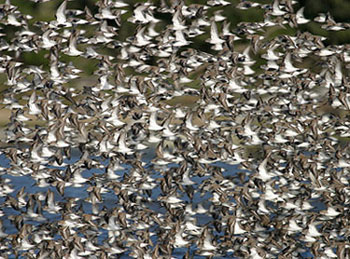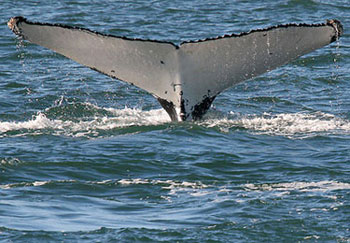
Source: Zebra Crossing, Rainbirder,Flickr
Populations of organisms also respond to external
stimuli. Migration is the most common response.
Populations of animals migrate for a number
of reasons such as limited water, food, and
shelter or to reproduce.
Seasonal migration is migration that corresponds with the change in seasons. Most migrations fall within this category. The exact triggers of seasonal migration are not fully understood. Some scientist believe that temperature is the major stimulus for migration while other scientist argue it is the length of day.

Source: Shorebird Flock, USFWS Pacific, Flickr
Reproductive migration is the movement of animals to bare young. The area may be safer for the young because of fewer predators or more shelter from predators. In other cases, the area is safer because the animal requires a different type of habitat when it is young than when it is older.

Source: Humpback Whale, Marj K, Flikr